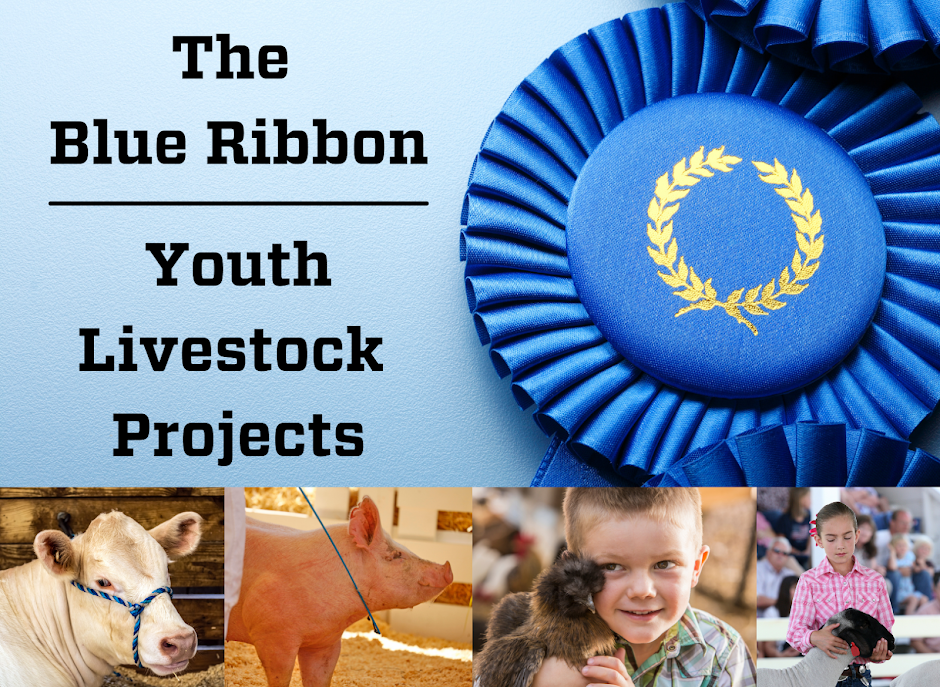Here is my packing list of items to take to the show for one calf and the reason why I take them.
Halters and Show Tack
- 1 Rope Halter - This is the one used everyday to walk and work with your calf.
- 1 Rope Neck Tie - Use this when cattle are being bedded down as a back up in case your rope halter comes untied.
- 1 Show Halter - Get an adjustable leather halter with a chain chin piece on the lead. Halters come in different sizes and colors. Check the fit at home and adjust it before packing it for the show. Choose a color that matches your calf. Black halters for black calves, brown or reddish brown for red calves and white for solid white calves.
- 1 Show Stick - Bring a show stick that is the right length for you and is in the best condition. I do not recommend some of the fancy painted or rhinestone covered ones I have seen. A straight stick that is a solid color that complements your calf is my choice to pack in the showbox.
- 4 Safety Pins - Some larger shows make exhibitors wear a large paper number on you body so they can more easily keep track of who is showing. Keep safety pins in the showbox just in case you have to where a number.
- 1 Adhesive Remover - After a full fitting, getting adhesives and paint to wash out is tough. Adhesive removers help break down the sticky stuff to make it easier to wash out. Use it before soap and water.
- 1 Mild Soap - You do not need multiple shampoos, conditioners and detanglers at a show. One good mild soap that can remove dirt, adhesives and touch up paint is all you need. A good liquid dish soap is my favorite for its ability to remove everything we can put in a calf's hair.
- 1 Water Hose - You need a hose that is long enough to go all the way around your calf and still reach the hydrant. Some shows supply hoses in their wash racks, but not all. The hose can also be used to fill water buckets as well.
- 1 Spray Nozzle - I like a nozzle I can shut off while you scrub your calf and the water stream can be adjusted from a gentle shower to rinse with, to a narrow stream for powering dirt off the hooves.
- 1 Regular Comb - The regular comb is used to pull up every hair and remove loose hair, especially right after a bath. I also take it into the wash rack and use the smooth back side as a water scraper to remove excess water.
- 1 Fluffer Comb - The fluffer comb is used for just that, to fluff hair dry hair.
- 1 Blow Dryer - Wet calf hair likes to stay laying down. Getting it dry and fluffed up is important after a trip to the wash rack. The blower can also quickly remove dust and shavings when calves have been laying down.
- 1 Foam or Mousse - Foam or Mousse is used on the body hair to help it stay fluffed up and not lay down as easy.
- 1 Light Adhesive - Light adhesive allows hair on the legs and tailhead to be combed into place.
- 1 Adhesive for Leg Hair - Leg hair adhesive holds these hairs very stiff. It dries hard and allows for trimming and shaping with clippers or scissors. When dry it usually appears lighter color than most dark calves' hair.
- 1 Touch Up Paint - Touch up paint is used to bring the right color back to areas of the body where adhesives have dried. Choose the correct color to match your calf. DO NOT use regular spray paint from the hardware store! Use a paint formulated for livestock.
- 1 Light Oil or Sheen - These products give calf hair a shiny, healthy look. They also return some moisture to hair after a soapy wash.
- 1 Large Clippers - Calves should have the majority of their haircut done at home, but for touching up large areas, like the ribs, belly or even the legs, they make it easier.
- 1 Small Clippers - Small clippers are for the detail trimming where the big clippers are harder to handle. Touch up clipping on the neck, tailhead or legs can be quick and easy with small clippers.
Scott Stinnett
Extension Associate
Kit Carson County
Golden Plains Area
Colorado State University Extension
